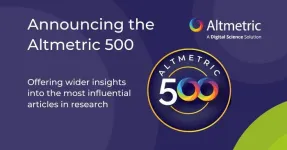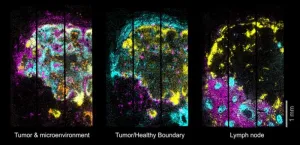(Press-News.org) Type 2 diabetes in young people ages 10 to19 has more than doubled in the past 20 years, yet it remains difficult for physicians to predict who will be diagnosed and who will improve with treatment. A newly published study from the University of Oklahoma shows that measuring the circulating abundance of microRNAs – which affect insulin-producing beta cells in the pancreas – is likely as effective as measuring the level of sugar in the blood for determining how a young person with the condition will fare.
Jeanie Tryggestad, M.D., an associate professor of pediatrics in the OU College of Medicine, led the study, which is published in The Journal of Clinical Endocrinology & Metabolism. It marks one of the first times microRNA abundance has been explored to predict the progression of Type 2 diabetes in youth. The specific microRNAs in the study are involved in insulin resistance and other actions that can stress beta cells or cause their death. The research is significant because it points to a process that is necessary to understand in order to ultimately design a strategy for prevention.
“Type 2 diabetes in youth is so aggressive, and the decline of beta cell function in youth is much more than we see in adults,” Tryggestad said. “We believe that predicting what will cause beta cell dysfunction, and eventually preventing that dysfunction, is one of the keys for preventing or treating Type 2 diabetes.”
Tryggestad’s study showed that the microRNAs, at baseline, were nearly as effective as A1C measurement (average level of blood sugar) when predicting who would fail to respond to treatment for Type 2 diabetes. Treatment failure was defined as having an A1C of greater than 8% for six months or a circumstance that caused the study participant to go back on insulin without the ability to come back off. Circulating microRNAs also predicted a 20% decrease in beta cell function during the first six months of the study.
Currently, microRNAs can be measured only in a research setting, not in a clinic, but that may change in the future, Tryggestad said. The study’s implications are important not only for the predictive potential of microRNAs, but because they represent a mechanism, or part of the process by which Type 2 diabetes develops and worsens.
“Glucose and A1C are relevant to me as a clinician, but as a clinician-researcher, it’s important to have this additional piece of information about microRNAs because it points us toward a mechanism. It’s the mechanism that we need to understand to design a prevention. It adds a layer of understanding that we haven’t had before,” she said.
Addressing the dramatic increase in Type 2 diabetes in children is only becoming more critical. Each year in the United States, cases of Type 2 diabetes in youth increase by 5.3%. At that rate, the prevalence is expected to increase by a staggering 700% by the year 2060. Tryggestad said that today, more youth ages 15 to 19 are living with Type 2 diabetes than Type 1 diabetes – the first time that has ever happened.
The samples analyzed in this research came from participants in the landmark TODAY study (Treatment Options for Type 2 Diabetes in Adolescents and Youth). The OU College of Medicine played a major role in the multi-center clinical trial, which began recruiting participants in 2003 and ended in 2020. The trial featured 699 study participants, and Oklahoma enrolled more patients than any other participating site.
The trial was the first and largest of its kind to compare treatments for Type 2 diabetes in youth, but it has continued to yield information since the original study ended. The OU College of Medicine was awarded an additional grant to analyze microRNA samples taken during the first 10 years of the study.
###
About the project
The full study, titled “Circulating MicroRNAs as Predictors of Beta Cell Function in Youth-onset Type 2 Diabetes: The TODAY Study,” can be found at https://doi.org/10.1210/clinem/dgae376. This work was completed with funding from the National Institute of Diabetes and Digestive and Kidney Diseases and the National Institutes of Health Office of the Director through Grants U01-DK61212, U01-DK61230, U01-DK61239, U01-DK61242, and U01-DK61254.
About the University of Oklahoma
Founded in 1890, the University of Oklahoma is a public research university located in Norman, Oklahoma. As the state’s flagship university, OU serves the educational, cultural, economic and health care needs of the state, region and nation. OU was named the state’s highest-ranking university in U.S. News & World Report’s most recent Best Colleges list. For more information about the university, visit www.ou.edu.
END
AMHERST, Mass. – Craig Martin, professor of chemistry, and Sarah Perry, associate professor of chemical engineering, both at the University of Massachusetts Amherst, recently received support from the National Institutes of Health (NIH) to develop a novel approach toward efficiently, reliably and cost effectively synthesizing novel strands of specialty “long RNA.” Future genetic research into everything from basic cell biology to advanced therapeutics depends in part on having just the sort of complex, modified RNA that Martin and Perry will be working to make widely available.
RNA is a molecule ...
In a new article, researchers at the University of Illinois Chicago debunk four common myths about the safety of intermittent fasting.
Intermittent fasting has become an increasingly popular way to lose weight without counting calories. And a large body of research has shown it’s safe. Still, several myths about fasting have gained traction among clinicians, journalists and the general public: that fasting can lead to a poor diet or loss of lean muscle mass, cause eating disorders, or decrease sex hormones.
In a new commentary in Nature Reviews Endocrinology, UIC researchers debunk each of these. They base their ...
Digital Science, a technology company serving stakeholders across the research ecosystem, today announces an exciting new tranche of data that throws light on how and why research cuts through to society at large – in the shape of the Altmetric 500.
A decade on from the first Altmetric 100 reports, which listed the most influential academic articles in a given year, a leading provider of alternative metrics for published research is now releasing an upgraded overview of research engagement: the Altmetric ...
On June 25, China’s Chang’e-6 (CE-6) lunar probe is set to return to Earth, carrying the first surface samples collected from the farside of the Moon. In anticipation of this historic event, scientists from the Institute of Geology and Geophysics at the Chinese Academy of Sciences are publishing their predictions for the unique materials that may be found in the CE-6 samples in the journal The Innovation.
Based on the geological characteristics of the probe’s landing site, the researchers anticipate that the returned surface samples will consist of 2.5-million-year-old volcanic rock combined with ...
Internet users leave many traces on websites and online services. Measures such as firewalls, VPN connections and browser privacy modes are in place to ensure a certain level of data protection. However, a newly discovered security loophole allows bypassing all of these protective measures: Computer scientists from the Institute of Applied Information Processing and Communication Technology (IAIK) at Graz University of Technology (TU Graz) were able to track users' online activities in detail simply by monitoring fluctuations in the speed of their internet connection. No malicious code is required to exploit this vulnerability, ...
About The Study: This prospective, observational study found that medication abortion obtained following no-test telehealth screening and mailing of medications was associated with similar rates of complete abortion compared with in-person care with ultrasonography and met prespecified criteria for noninferiority, with a low prevalence of adverse events.
Quote from corresponding author Lauren J. Ralph, Ph.D., M.P.H.:
“This is a prospective, observational study comparing patients who received medication abortion care remotely and without ultrasound to those who went in person to a facility and got an ultrasound. Using data from patient surveys and their medical record, we found ...
An open-source platform developed by researchers in Nikolaus Rajewsky’s lab at the Max Delbrück Center creates molecular maps from patient tissue samples with subcellular precision, enabling detailed study and potentially enhancing routine clinical pathology. The study was published in “Cell.”
Researchers in the Systems Biology Lab of Professor Nikolaus Rajewsky have developed a spatial transcriptomics platform, called Open-ST, that enables scientists to reconstruct gene expression in cells within a tissue in three ...
About The Study: The findings of this case-control study reaffirm current recommendations for broad age-based use of annually updated COVID-19 vaccines given that (1) the BNT162b2 XBB vaccine (Pfizer-BioNTech; 2023-2024 formulation) provided statistically significant additional protection against a range of COVID-19 outcomes and (2) older versions of COVID-19 vaccines offered little, if any, long-term protection, including against hospital admission, regardless of the number or type of prior doses received.
Corresponding Author: To contact the ...
Researchers compared patients who received care remotely to those who got ultrasounds and found no differences in outcomes.
Medication abortion patients who receive pills by mail without first getting an ultrasound do just as well as those who are examined and given the drugs in person, new research from UC San Francisco has found.
The study, which appears June 24 in JAMA, adds to evidence from UCSF’s Advancing New Standards in Reproductive Health (ANSIRH) program that using telehealth for medication abortion is safe and effective.
Although the ...
The current method for assessing medication-related liver injury is not providing an accurate picture of some medications’ toxicity—or lack thereof—to the liver, according to a new study led by researchers from the Perelman School of Medicine at the University of Pennsylvania. Classification of a medication’s potential to damage the liver, termed “hepatotoxicity,” has been historically determined by counting individual reported cases of acute liver injury (ALI). Instead, the researchers used real-world health care data to measure rates of ALI within a population and uncovered that some medications’ levels of danger to the liver ...





